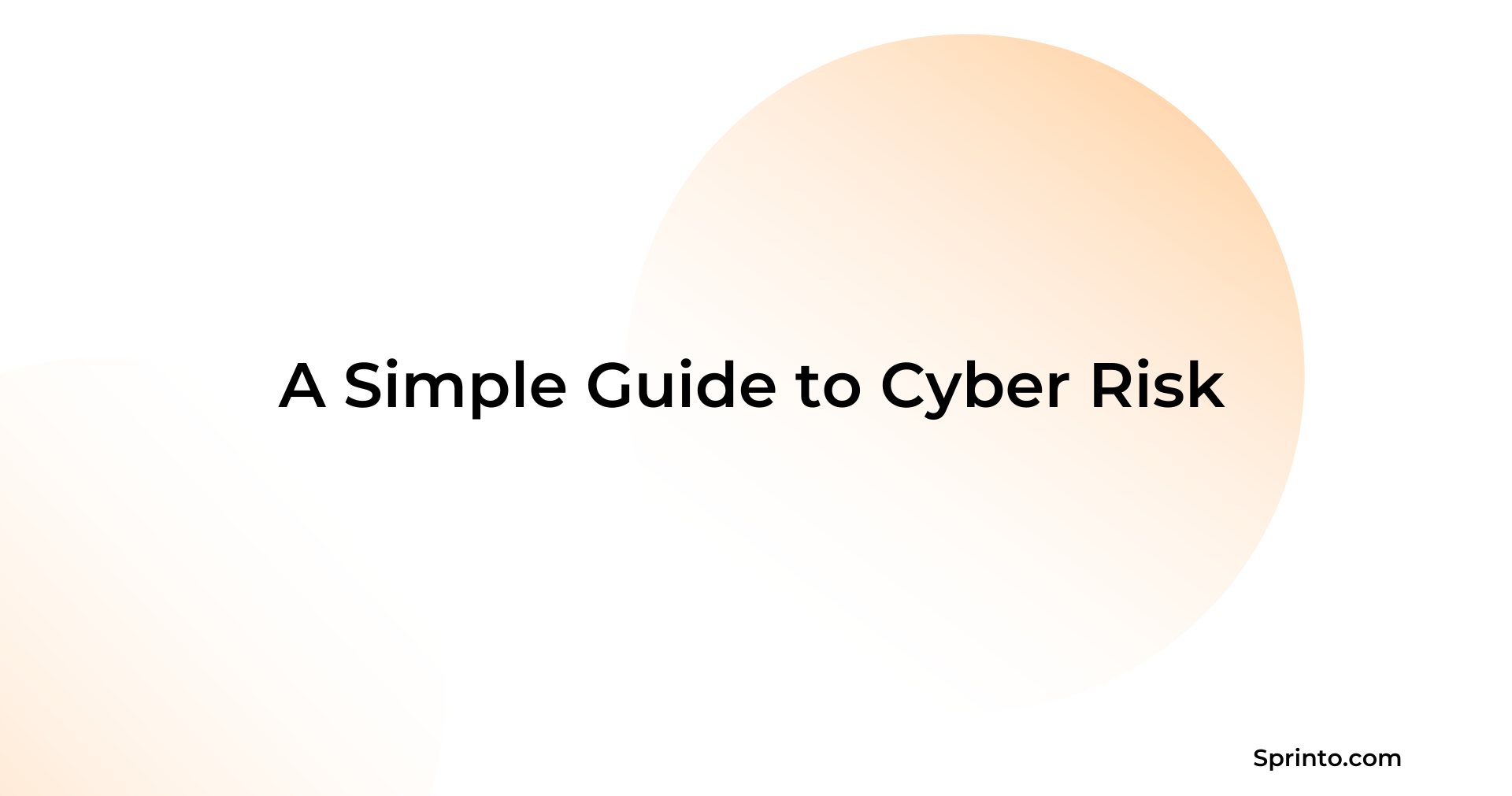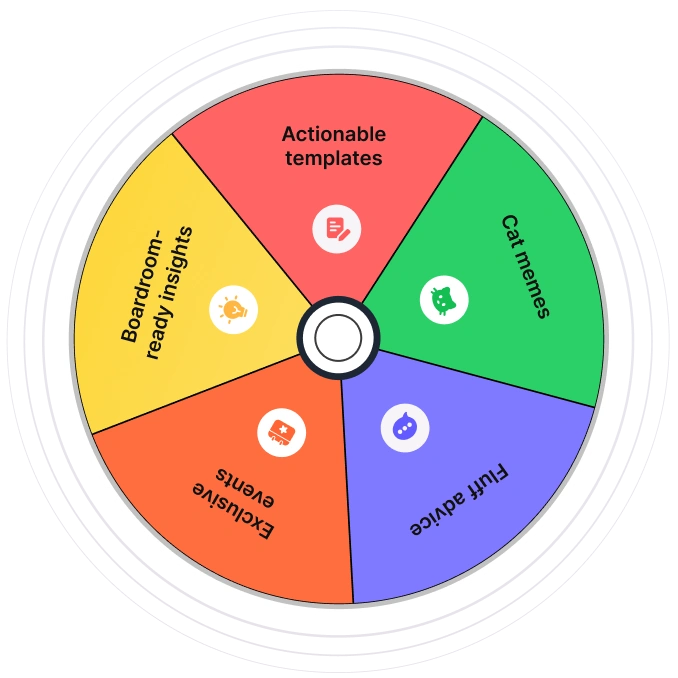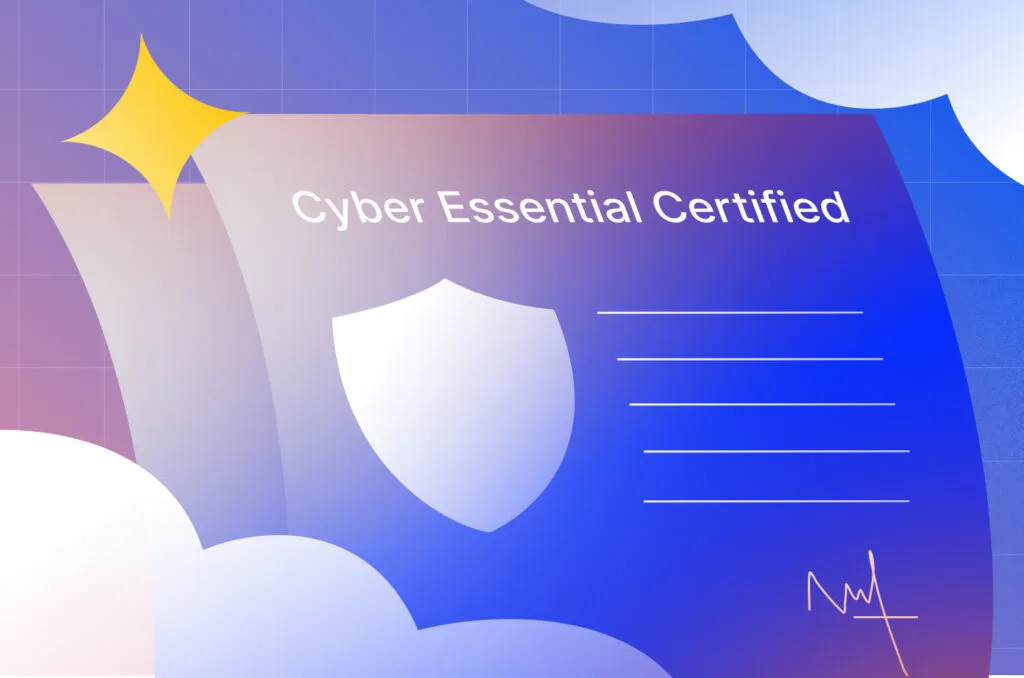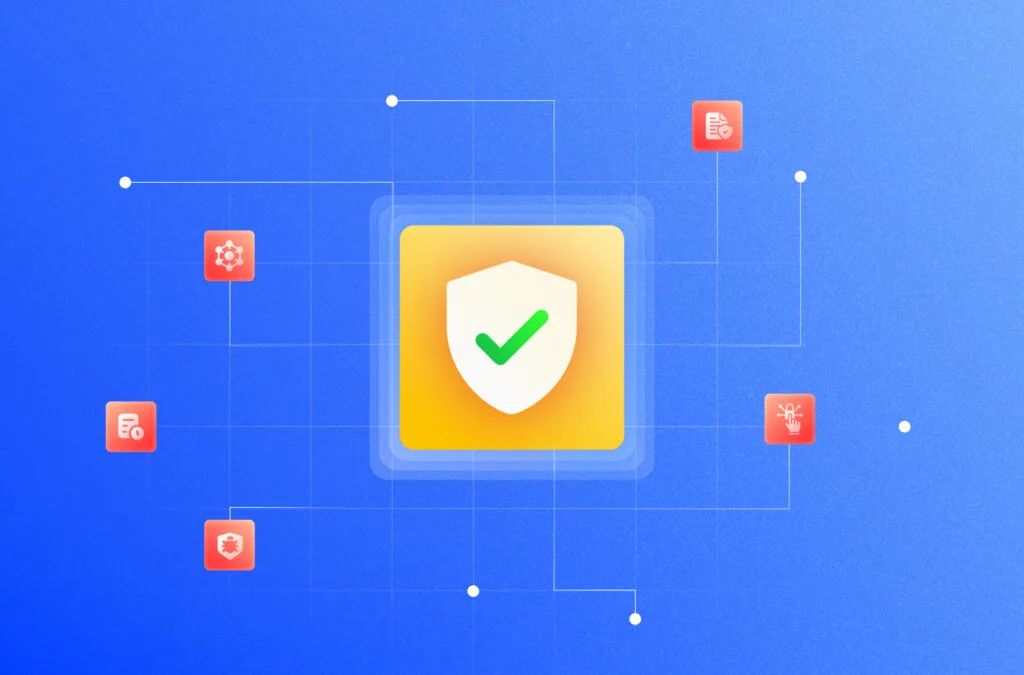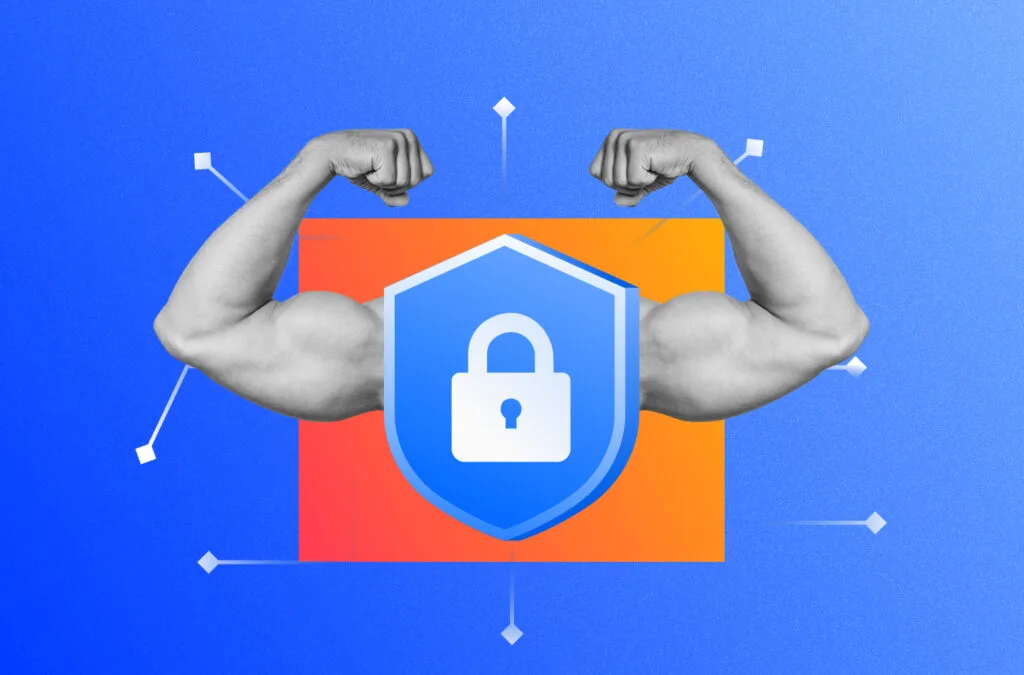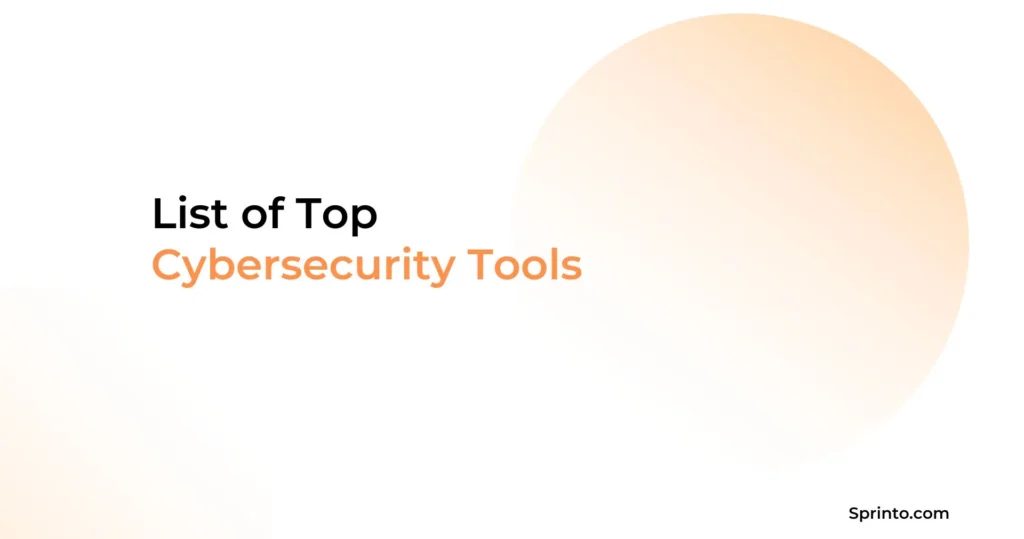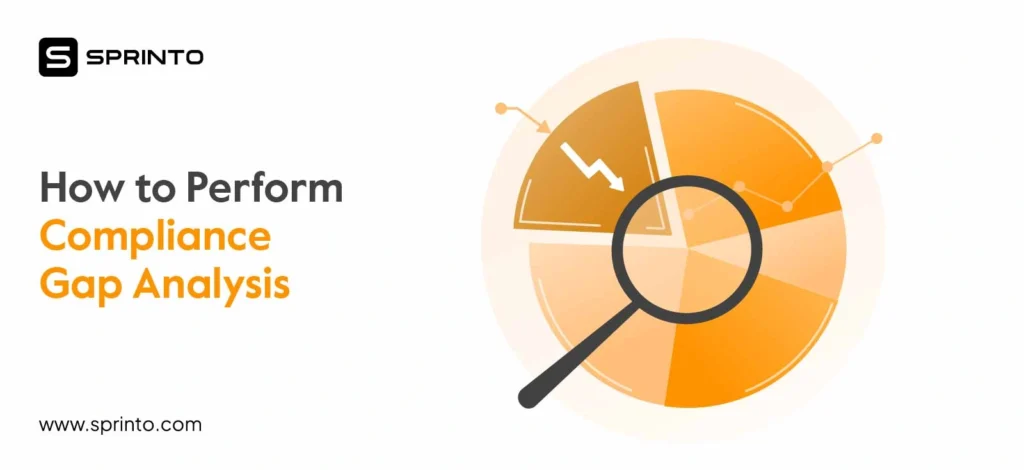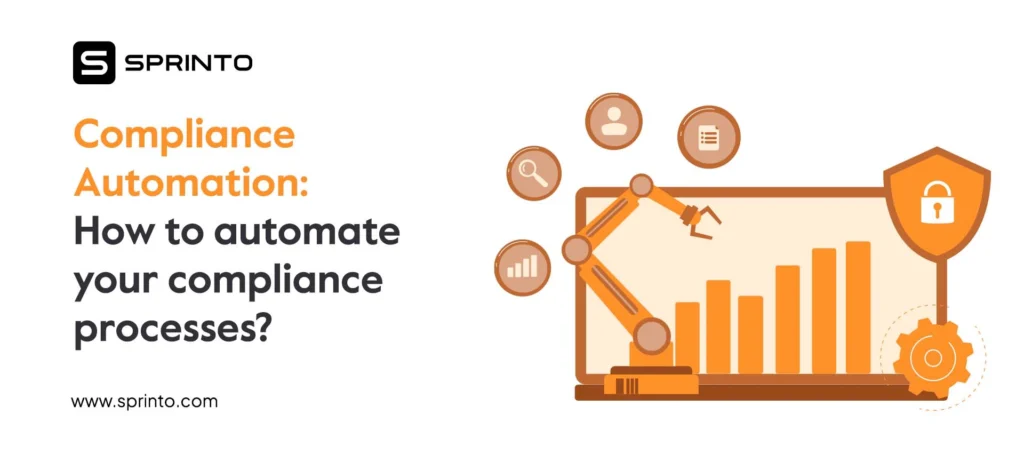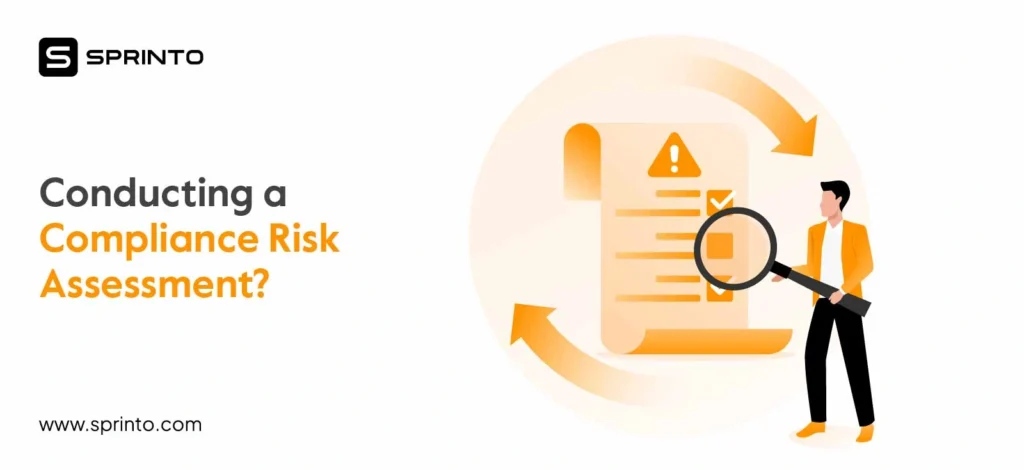In 2024, companies worldwide faced an average of 1,636 cyberattacks each week, marking a 30% increase year over year. This translates to nearly 235 attacks daily, a worrying number that shows cyber attacks are not incidental but a constant reality.
Any organization that relies on digital tools faces cyber risk in such an environment. This blog explains what cyber risk means, why it matters, and how it’s different from cybersecurity risk and threats.
We’ll also look into common types of cyber risks, discuss protection tips, and explain how to automate compliance and strengthen your defences.
| Cyber risk affects all businesses using digital systems—no matter the size or industry. |
| Threats can stem from hackers, internal errors, or unvetted vendors. |
| Minimize risk with strong access controls, regular risk assessments, and employee training. |
| Sprinto helps you stay secure and audit-ready by continuously monitoring risks and controls. |
What is Cyber Risk?
Cyber risk refers to the possibility that a company’s digital systems could be exposed to harm because of failures or vulnerabilities. This harm can be in data loss, financial damage, or reputational loss. Cyber risk is always possible because most businesses today depend on technology systems that can fail, be misused, or be attacked.
Both internal and external factors can cause cyber risks. External risks include phishing, malware, or attacks from hackers and cybercriminals. Internal risks involve employee oversight, poor security settings, or delays in software updates. In either case, cyber risks can cause major breakdowns in the confidentiality, integrity, or availability of important data.
In contrast to common perception, cyber risk is not only a concern for tech companies or large enterprises. Any business that uses digital technologies like cloud apps, stores customer data, or relies on connected systems is vulnerable. As your digital tool usage expands, so does your attack surface, exposing you to external cyber threats and internal security errors.
Why Managing Cyber Risk is Crucial to Digital Business Environments?
Data is today one of a business’s most valuable assets, on par with physical infrastructure. As organizations rely more on cloud services and remote work tools, the risk of cyberattacks grows just as quickly.
Threat actors now target businesses of all sizes, and even a single security breach can lead to massive financial losses, reputational damage, and legal consequences.
Cyber risk management is not about eliminating every threat. It is about understanding where your business is most vulnerable and implementing the right protections.
Without a structured risk management strategy, organizations are left reacting to attacks instead of tackling them proactively. Proactive cyber risk management is crucial for all companies to protect their critical assets, strengthen their defenses, and support long-term success. Risk management platforms like Sprinto simplify and automate this process.
Cyber Risk vs Cyber Threat vs Cybersecurity Risk
While these three terms are used interchangeably, they have slightly different meanings that are important to understand when building a risk management strategy.
Cyber risk is the broadest of the three terms. It refers to any risk arising from using digital systems and technologies, such as financial loss, operational disruptions, regulatory penalties, or reputation damage.
Cybersecurity risk can be understood as a subset of cyber risk. It specifically refers to threats to the security of information systems. To put it simply, it deals with how vulnerable your IT infrastructure is to security breaches, whether accidental or deliberate. Cybersecurity risks often stem from malicious actions like ransomware, phishing attacks, or unauthorized access.
Cyber threats are potential sources of harm to your organization. They can come from external actors (like hackers) or internal factors (like human errors). If left unchecked, these triggers can lead to actual cyber incidents.
Here is an easy way to understand these three terms:
- Cyber risk. All business risks from technology.
- Cybersecurity risk. Specific risks to IT systems from breaches or attacks.
- Cyber threats. Possible events or actors that can cause harm.
Types of Cyber Risks
Cyber risks can take many forms, and they continue to evolve as digital infrastructures become more complex. We have broadly divided cyber risks into two types: internal risks and external risks.
Internal Cyber Risks
Internal risks come from within your organization and can be accidental or intentional. They are generally overlooked as a cybersecurity issue, but can be just as damaging as external threats.
Here are some common types of internal risks:
- User error: This is when employees unintentionally cause breaches by making grave security mistakes like clicking on malicious links, mishandling sensitive data, or failing to follow security protocols. The risk of user error is higher if employees do not receive regular security training.
- Unpatched systems: If security updates are not applied on time, known vulnerabilities in your systems can remain exposed. These vulnerabilities, known as “unpatched” gaps, are common entry points for hackers and cybercriminals.
- Poor identity/access management: Poor identity management issues, like reusing credentials, unmanaged permissions, or using weak passwords, can easily be exploited by hackers. Machine identities like API keys and digital certificates also pose a risk if not properly managed.
- Shadow IT and abandoned assets: Untracked devices or cloud tools outside of official IT oversight can create unknown vulnerabilities if left unmonitored or improperly secured.
External Cyber Risks
These are risks introduced by actors outside your organization. They are often deliberate and exploit both technical weaknesses and human behaviour.
Here are some common types:
- Phishing and social engineering: Attackers impersonate trusted contacts to trick employees into downloading malware or revealing login credentials. Common types include spear phishing, spoofed domains, and business email compromise (BEC).
- Malware and ransomware: Malware (short for malicious software) can infiltrate security networks to steal data, corrupt files, or lock systems, sometimes in exchange for a ransom. Common malware variants include spyware, trojans, and worms, often used with phishing attacks.
- Denial-of-service (DoS/DDoS) attacks: These attacks flood systems with traffic, overwhelm servers, and force you to take services offline. While these don’t always compromise data, the disruption can halt operations and damage user trust.
- Injection attacks: These involve inserting malicious code into input fields or web applications, which can expose sensitive information or alter application behaviour. Common examples include SQL injection and cross-site scripting (XSS).
Third-party and supply chain risks: These are a form of indirect external risk where vendors or service providers with poor security controls compromise your environment through a breach of their own ecosystem.
How to Safeguard Your Business from Cyber Risks
Cyber risk can never be fully eliminated, but it can be managed. Reducing your organization’s exposure to threats requires a proactive, layered cybersecurity strategy that considers people, processes, and systems.
Here are seven steps to protect your organization from cyber risks.
1. Conduct Regular Risk Assessments
The first step to reducing cyber risk is knowing where your vulnerabilities lie.
Conduct comprehensive risk assessments to identify weaknesses across your networks, devices, applications, and users.
These can reveal where your systems may be compromised, estimate how severe a security breach could be, and help you focus resources where they are most needed.
Use frameworks like ISO 270001 or NIST to guide your assessment methodologies, and remember to repeat them frequently to reflect changes in your infrastructure or threat landscape.
2. Strengthen Access Controls
Not everyone in your organization needs access to everything. Overly broad permissions, lack of oversight, or outdated account settings are the reasons for unauthorized access. Limiting who can access what — and under what conditions — thus becomes an important way to prevent internal and external breaches.
Implement policies like least privilege and zero trust principles to ensure every user and device is verified continuously, not just at login. Also, multi-factor authentication should be used across all devices, and segment networks should be used to limit movements between systems.
3. Keep Systems and Software up to Date
Unpatched systems remain one of the top causes of successful cyberattacks. Hackers often create attack tools soon after a patch is released, targeting systems that haven’t been updated yet. If your organization delays installing the patch, you risk staying exposed to these attacks.
Here are some recommendations for a thorough update policy:
- Set up automated patch management to apply security updates promptly.
- Monitor software vendors for important vulnerability announcements.
- Prioritize high-risk systems (like servers, VPNs, and endpoint tools).
- Maintain an up-to-date inventory of all software and firmware.
4. Train Employees to Recognize Threats
Security awareness is often the last (and most important) defense against cyber risks.
Many hackers use phishing emails or social engineering schemes to exploit human error. Without proper training, a single, well-meaning employee’s click can undermine even the most secure systems.
To reduce this risk, employees should receive regular, role-appropriate training that equips them to spot, question, and report suspicious activity. Ideally, security training should cover:
- How to recognize phishing emails, spoofed domains, and suspicious attachments
- Safe handling of sensitive information, data, links, and logic credentials
- Clear reporting protocols to report potential threats to the internal security team
Security training should also be continuous, not just a one-time session. It’s also recommended to include threat simulations and real-world examples to help employees learn how to respond and reinforce best practices.
5. Encrypt Data and Maintain Resilient Backups
Even if attackers breach your network, encryption can protect sensitive information by making it unreadable without the proper keys.
A strong backup strategy also ensures that your business can continue functioning even if data is lost, altered, or held for ransom.
We recommend following the 3-2-1 rule in your backup approach. The rule involves creating three copies of data, two stored on different media types and one stored off-site or offline.
6. Manage Third-Party and Vendor Risks
Your cybersecurity is only as strong as the weakest vendor in your supply chain. Third-party providers can introduce serious risks if their security practices don’t meet your standards.
To manage this risk, thoroughly vet vendors before onboarding, especially those handling sensitive system access. Conduct regular reviews of their security practices, and ensure that all contractual agreements include data protection, breach notification, and compliance alignment provisions.
7. Develop an Incident Response Plan
Even the best defenses cannot guarantee complete protection from cyber incidents. This is why a clear, well-tested incident response plan is important. It outlines who needs to act, what steps to take, and how to recover systems and restore normal operations as quickly and safely as possible.
Your incident response plan should be fully documented, reviewed regularly, and tested through simulated scenarios. A good incident plan typically covers escalation procedures, internal points of contact, and guidelines for how legal, communications, and technical teams should respond to a security breach.nes for how legal, communications, and technical teams should respond to a security breach.
Avoid Cyber Risks and Stay Protective With Sprinto
Cyber risk might look like a distant possibility. But in reality, it’s a daily challenge that every digitally connected organization faces. As threats continue to become more sophisticated, so must the tools and strategies you use to manage them.
This is where Sprinto steps in.
Sprinto is a compliance automation platform built for cloud-first companies. We help you manage cyber risk by automating critical security workflows, such as:
- Continuous control monitoring across frameworks like SOC 2, ISO 27001, HIPAA, and GDPR
- Real-time risk assessments with benchmark-driven risk registers
- Automated evidence collection from over 160+ cloud integrations (AWS, Google Workspace, Okta, and more)
- Vendor risk management tools to assess and monitor third-party providers
- Unified dashboards and auditor views for instant audit-readiness and transparency
- Smart alerts and task tracking to ensure nothing falls through the cracks
Ready to automate and simplify your cyber risk mitigation strategy? Schedule a demo today!
Sriya
Sriya is a strategic content marketer with 5+ years of experience in B2B SaaS, helping early- and growth-stage companies build and scale content engines from scratch. She specializes in long-form storytelling, thought leadership, and content systems that grow traffic and drive pipeline. Passionate about solving messy, early-stage challenges, she loves figuring out what to build, how to say it, and who it’s for.
Explore more
research & insights curated to help you earn a seat at the table.



